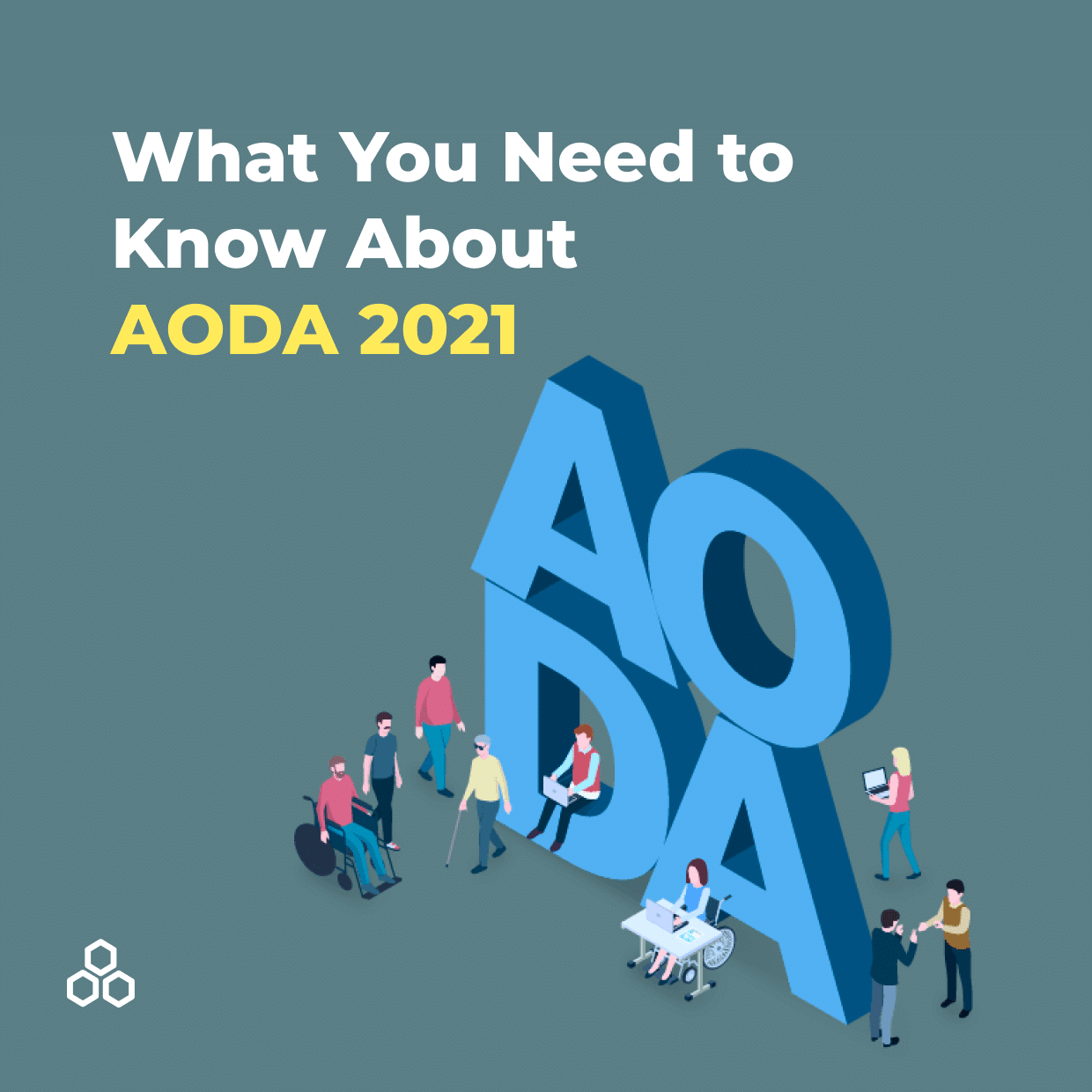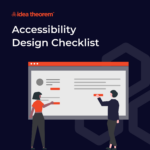2005: Ontario’s AODA law sets accessibility standards for public spaces for people with disabilities.
Regulations constantly evolve to keep pace with technology, enabling more accessibility measures. But, when it comes to web accessibility, this parallel race between technology and accessibility is even more apparent.
AODA just got an update! New standards and deadlines for businesses to provide accessible goods are here.So let’s find out more.
WCAG (web accessibility standards) are key for AODA compliance. They’re the gold standard set by W3C.
While not the newest, WCAG 2.0 AA was the AODA standard Ontario businesses had to meet by 2021.
Who Should Comply with AODA 2021?
The deadlines for implementing steps of adopting the AODA regulations made many companies nervous. Forget the fine scare tactics. AODA compliance is more important.
Deadlines & fines are there, but extensions are possible. AODA focuses on support, not punishment.
January 1st, 2021
Big AODA deadline passed, but it’s not the final act. This was when the following institutions and organizations had to comply with the WCAG 2.0 AA standards:
- The Government of Ontario and Legislative Assembly
- Large organizations of 50 or more employees
- All municipalities
- Libraries
- Educational institutions
June 30, 2021
This deadline was for businesses and non-profit organizations of 20 or more people to file an accessibility report.
Big AODA deadline passed, but extensions are possible. Be proactive!
Why AODA 2021 Important
AODA compliance is a social responsibility: all Ontarians deserve access.
Second, you must also consider the consequences of ignoring these requirements, which include penalties and fines. AODA isn’t a media scare tactic. It’s about inclusion. Businesses should focus on making Ontario accessible, not deadlines.
Common Accessibility Issues
Stuck on AODA website/app accessibility? Let’s tackle common issues!
- Lacking alt-text on images
This is one of the most fundamental changes you will have to make on your website, in case it wasn’t already part of your standard procedure. Adding relevant alt-text to all the non-text elements on your website will make your site more accessible and help with SEO.
Make sure all your images are described concisely and relevant so that a visually-impaired person would know what they contain.
- Missing semantic mark-ups
Use your content editor to properly mark the sequences in your text so that the content can be read with an easy understanding of its structure and hierarchy. The proper way to do that is to mark your titles and subtitles with the appropriate tags within your HTML code.
- Vague anchor text
Anchor texts are the words that lead the user to another link. If your anchor text is vague and depends on the context, it is not properly adapted for accessibility. Explain where the link leads and what that page is about.
- Insufficient color contrast
The web design of your pages should not only be esthetically pleasing but functional and readable. The contract of the text against the background should be 4.5:1 for standard text and 3:1 for larger text, according to WCAG 2.1 requirements. Graphics should also have a contrast of at least 3:1.
- Using text as an image
Using text as an image is a common issue for the accessibility of content. Unless necessary (like displaying your company’s logo), avoid it and use text that can be read using assisting software.
- Updating content dynamically
While dynamic content is very useful in creating an engaging and exciting user experience, it might be problematic if the content cannot be announced by assisting technologies.
Accessibility Tips
AODA website/app compliance is complex but crucial. Act now to remove disability barriers.
Start with basic accessibility updates, prioritize key areas. Makes full compliance smoother by deadlines.
Be sure to know the AODA standards, and start by planning to become fully compliant with them. Train staff & audit content = Accessibility Act compliance.
Contact us to see how you can incorporate accessible design into your next project!
—
What’s Next
Idea Theorem is an award-winning design & development agency based in North America. Through our empathy-driven approach, we have crafted digital products that have positively impacted over 10 million users. Our mission is to shape the digital future by delivering exceptional experiences. Contact Us if you have any questions; we will gladly help you.






